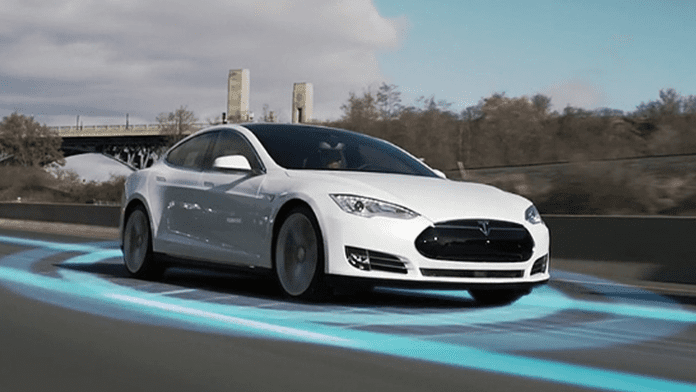Tesla is straying from industry norms by announcing it will phase out ultrasonic sensors (USS) in its electric vehicles. The announcement is a part of the company’s plans to shift toward its camera-only Tesla Vision driver-assist technology.
Many EV makers rely on a combination of lidar, radar, and cameras in their vehicles. According to Electrek, Tesla’s ultrasonic sensors are mainly used for short-range detection to aid parking and collision warnings.
Tesla plans to discontinue using the ultrasonic sensors from the new Model 3 and Model Y vehicles sold in North America, Europe, the Middle East, and Taiwan starting this month before expanding to the rest of the global market. The Model S and Model X EVs will stop including the sensors beginning in 2023.
The EV automaker said the shift from sensors would not affect its vehicles’ crash safety ratings. Still, it did warn that cars shipping without the sensors will “temporarily” lose access to certain features, such as Park Assist, Autopark, Summon, and Smart Summon. Tesla said it would restore access to these features once they proved the camera-based system performs them equally well.
A similar situation occurred last year when Tesla announced it would no longer be shipping cars with radar, instead relying solely on its camera-based system. At the time, the New York Times reported that Tesla CEO Elon Musk “repeatedly told members of the Autopilot team that humans could drive with only two eyes and that this meant cars should be able to drive with cameras alone.”
Although Tesla’s decision to remove radar from its EVs resulted in similar restrictions on certain features, including Smart Summon, those restrictions have since been relaxed. The company says these cars “have either maintained or improved their active safety ratings in the US and Europe.”
However, the shift from radar to a camera system seemed to coincide with a rise in reports of “phantom breaking” incidents. The Washington Post reported increased complaints to the National Highway Traffic Safety Administration that seemed to line up with Tesla’s decision to stop shipping vehicles with radar sensors. Only time will tell if the decision to rely on cameras instead of sensors will create a similar issue.
Did you enjoy this article? Please share your thoughts, comments, or questions regarding this topic by connecting with us at newsroom@cbtnews.com.
Be sure to follow us on Facebook, LinkedIn, and TikTok to stay up to date.
While you’re here, don’t forget to subscribe to our email newsletter for all the latest auto industry news from CBT News.




